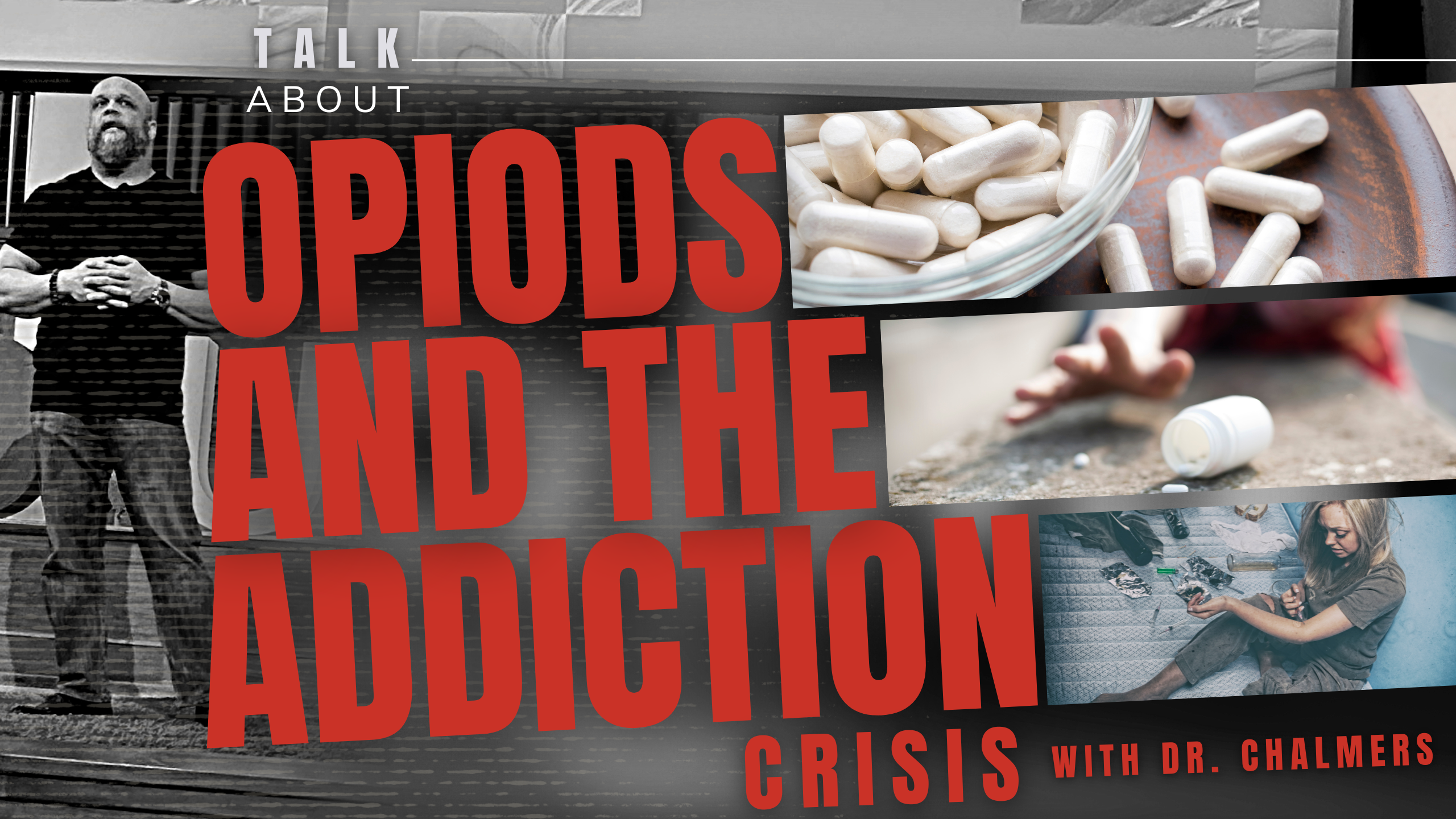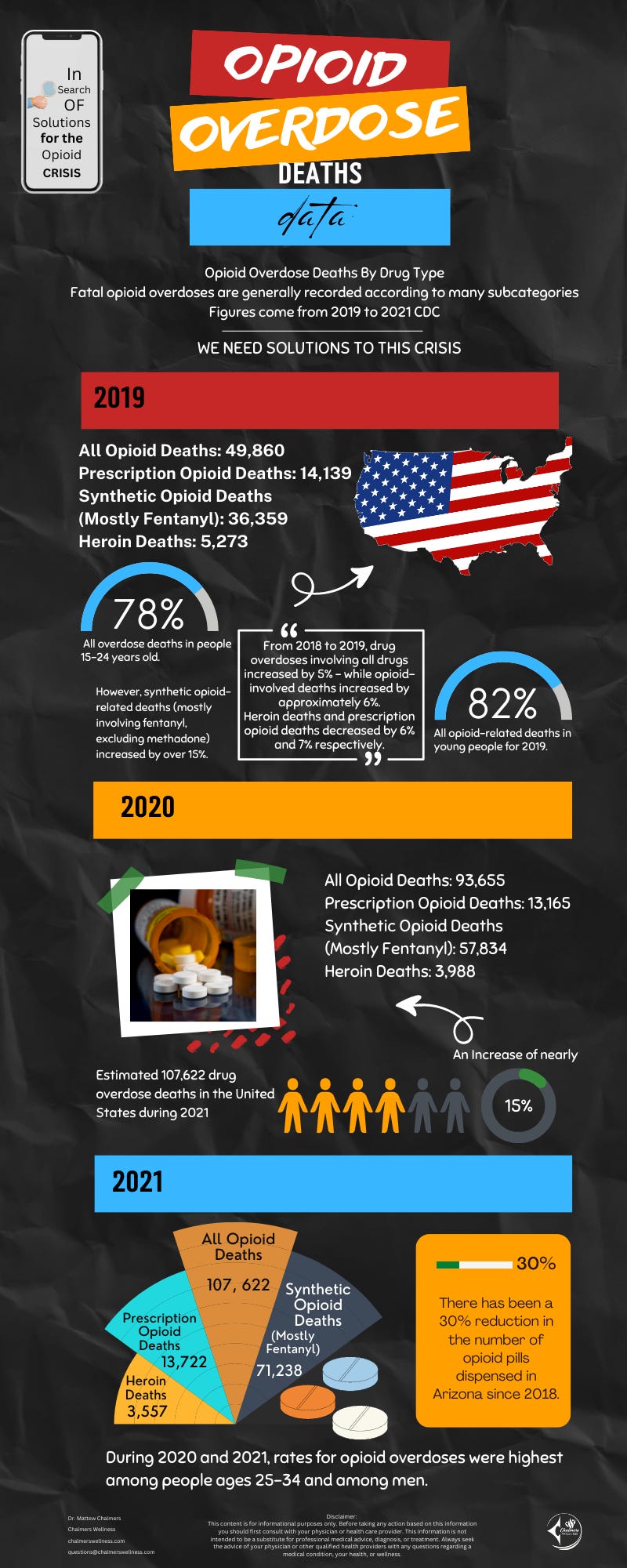Contact Us
Contact Us

Check out all things around my TEDx talk at Pillarsofwellness.com/tedx
When people make recommendations based upon research and personal experience, it sets a different outcome from the speakers. Speaking from personal experience helps establish the street cred and solutions that the speaker recommending.
In this podcast I get to answer more questions from my TEDx talk, and relate some of the personal experiences that helped my decision to move forward with the cannabis pain solution research.
Please send me your questions at [email protected] about any of the research as your questions could help with the crisis discussions.
This podcast features some questions that have been sent in from viewers of my TEDx talk.
Video:
The following is a transcription of this podcast from [email protected].
Dr. Matt Chalmers [00:00:04] This is Dr. Chalmers. Welcome to Wellness Insights with me. Dr. Chalmers.
Dr. Matt Chalmers [00:00:07] How did it affect my son’s pain management? A lot. I mean, this is more, and I have all the pictures. If you knew me, you wanted to throw up, but I had to take pictures of it while they were doing it. They did chip the bone off of his plate because of the bone and sort of growing over it. So imagine that they decided this long prior. It opens. They can get to the they can get inside, and they can start working on the actual bones.
Dr. Matt Chalmers [00:00:23] And they had to take a chisel and literally like chip away at the bone that’s in there before they can even unscrew the screws. When it was done. So you can see the incision, and you can see the bone, and there are holes, there are six holes in the back, like not like small holes, like big old holes where those screws used to be all the way through. And so then they put it back together.
Dr. Matt Chalmers [00:00:47] What happened the first time that he had the surgery when they put him in is that he had a reaction to the dissolvable strips, sorry, the dissolvable sutures they used. And so it had opened up. We had this wound issue to him; he had this giant scar. It was like three-quarters of an inch this way by the entire six-inch length of the scar. So what they did was they did a scar revision where they just cut off that scab. So he had to have the bone chipped away. He had six giant holes in the actual bone.
Dr. Matt Chalmers [00:01:22] Maybe six inches cut out and then sewn back together. That’s that’s what the surgery was. So I really understand this was not like pulling a splinter out. This was a major actual surgery, A to a ten-year-old. And then what we ended up doing was we just cut little strips, and I gave him little strips, and he was fine whenever he would be like, Hey, Dad, my arm starting to hurt, I would give him a little strip, and he put it under his tongue. It would dissolve, and he’d be fine. Ten or 15 minutes later, I’d be like, Hey, how’s your arm? He’s like, Oh, it’s fine. And he would go back to reading, and I was making sure that he wasn’t getting high because I wanted to make sure the dose was right.
Dr. Matt Chalmers [00:01:32] And I would talk to him and stuff like that, and he his normal silly self in anything, nothing I would consider that was an added bonus. No, no, no high issues. So it worked out really, really well. What observations do I make about the son’s experience with sublingual strips in terms of psychological effects. This is how I knew that I’d use them on me, and I’d use them on my friends and use them on everybody else. But when I gave them to my son for his issues, that’s really when I knew.
Dr. Matt Chalmers [00:02:16] I knew for a fact This is our replacement for opioids. This is it. My ten-year-old is not high. He’s talking normally. He’s reading his book. He’s remembering everything he read. He has no pain. This is what we need to be doing. This is it. This is where we need to go. The observation was that we have our solution. I’m done looking. This is it.
Dr. Matt Chalmers [00:02:35] We need everybody to know we have a new national conversation about this. We need to be using these in everybody so that we don’t have addiction issues. We don’t have the death issues and can bring everybody back together. We can rebuild and stabilize our families. So 100%, it was super critical. It changed the way I think about it, too, 100%. I know now that this is the medication we should be using.
Dr. Matt Chalmers [00:02:43] So that’s that was the observation I made, and that’s what it changed. So, how do I react to the idea of having more comprehensive information about cannabis? 100%. We need 100%. We need more research. And we’re trying right now to get our camera strips in for pain research in California. I’m pretty sure that seeing it knocked out. I will talk about that more than you guys want to hear. But because I, like I said, Ben, we’ve got it. We’ve got to got to give options other than opioids. You know, it’s we have to. So we know we need all the information we can. I’d love PET scan function. I love long-term studies. You know, all of it like we need is.
Dr. Matt Chalmers [00:03:36] But I’m an information guy. I want I want more information, not less. I think the bigger the picture you paint, the more dots you have, the easier it is to see patterns, the easier it is to see function. So, I would love to do more research. If you guys are doing research out there, actual research, get hooked up with us. I’ll give you the strips to test with. Let’s get it knocked out. Let’s make this stuff work. If you guys have any questions, hit us up. Questions at Chalmers Wellness dot com. Thanks.
The following are some excerpts from my 6 first articles and research on the opioid epidemic.
In 2018, we had 2 million people clinically addicted to opioids in the United States. However, because there’s very few clinically or socially acceptable alternatives that number went from 2 million in 2018 to 3 million in 2022. I’ll do the math for you that’s 21,000 people added to the addicted list each month, every month for four years.
Dr. Matt Chalmers If you think that’s about our Death numbers are even worse. In 2019, we lost 50,000 people to Opioid Overdose, or in 2020 we lost 70,000 people to
opioid overdose that’s 140% increase in one year.
I have been studying this plague and researching how we can turn this plague into simply a memory. It was truly an honor to be on the TEDx stage talking about the epidemic, and more importantly bringing solutions to the forefront.
Check out the full talk from the TEDxUCincinnati YouTube Channel
Insert full ted video :
Also, please take a look at my other 6 articles on this topic in the last several months below.
What is the difference between opioids and cannabis? You would be surprised what the research shows.
What is the psychological stance on using cannabis for pain relief?
Research matters in discussions around cannabis, and medical uses. What do you think?
What do you think about cannabis? Well, my opinions have changed through additional research.
Addressing the opioid addiction is a huge issue in the United States, and together we can make a difference.
Check out all things around my TEDx talk at Pillarsofwellness.com/tedx
Check out Chalmers Pillarsofwellness.com for Wellness updates! And ask me any questions you have at [email protected]. I answer all of them and look forward to hearing from you.
The Chalmers Wellness Stubstack just launched. Comment, Like, and Interact with other people on their wellness journey. Communities can make a difference. DrChalmers.substack.com

Dr. Matt Chalmers
Disclaimer: This content is for informational purposes only. Before taking any action based on this information you should first consult with your physician or health care provider. This information is not intended to be a substitute for professional medical advice, diagnosis, or treatment. Always seek the advice of your physician or other qualified health providers with any questions regarding a medical condition, your health, or wellness.
Additional resources and references:

https://www.ncbi.nlm.nih.gov/pmc/articles/PMC2657360/
Same study different write up. Shows suppression of BL amygdala
https://www.ncbi.nlm.nih.gov/pmc/articles/PMC4360235/
Again referencing the same study same conclusion
https://www.ncbi.nlm.nih.gov/pmc/articles/PMC2841401/
Showed that baso-lateral specifically R lateral activation of the amygdala helped suppress the feelings of pain and thus decreased the reported subjective pain felt.
https://www.ncbi.nlm.nih.gov/pmc/articles/PMC3549497/
Activating the 5 HT1 receptors in the BLA can suppress the learned failure response and thus reduce future anxiety. Viewing anxiety as perceived failure (conditioned defeat) in the future that holds fear now as if you are living in the failure at the moment. The 5 HT1 receptors help increase serotonin levels to the cleft.
https://www.ncbi.nlm.nih.gov/pmc/articles/PMC3242817/
More on 5 HT1 receptors
Showing that Delta 8 is just as effective with less side effects as medications already on the market.
https://pubmed.ncbi.nlm.nih.gov/34797727/
Cannabis
Showing that cannabis greatly reduced pain and the only real issue was cost and stigma. Reduced opioid use by 64% with a 17% reduction in opioid fatalities.
https://www.ncbi.nlm.nih.gov/books/NBK574562/ (5)
Many of the studies showing negative effects of cannabis on pain were set up to fail. Cannabis has been shown to be better than codeine
https://www.ncbi.nlm.nih.gov/books/NBK224384/
Pretty solid overview of how the receptors CBR1 work and where they are. The evidence that CBR1 is almost entirely inhibitory to neuronal tissue is pretty apparent. This widespread systemic placement of ligand based and cytoplastic receptor function that again is inhibitory shows a cannabinoid specific and dose dependent functionality of cannabis all over the body save the upper brainstem where the breathing center is. Activation of CBR1 greatly reduces excitotoxicity and reduces glutamate which by itself could stop seizure activity.
This also demonstrates significant protection against oxygen deprivation and reperfusion so the benefit to concussion and all oxygen deprivation function like epilepsy, and Parkinson’s where oxygen deprivation is a significant issue especially from sleep apnea issues.
https://www.ncbi.nlm.nih.gov/pmc/articles/PMC5877694/
Showing that the medulla has a low amount of CB1 receptors
https://onlinelibrary.wiley.com/doi/10.1111/j.1365-2826.2008.01671.x (6)
Opioid issues:
https://www.addictionresource.net/opioids/overdose-deaths/
https://pubmed.ncbi.nlm.nih.gov/35105535/
https://www.ncbi.nlm.nih.gov/books/NBK553166/
Nearly 70k deaths in 2020
https://www.cdc.gov/drugoverdose/deaths/index.html (2)
Death rate of 2019 just under 50k
https://www.aha.org/news/headline/2020-07-16-cdc-drug-overdose-deaths-46-2019 (1)
More info government numbers
https://www.hhs.gov/opioids/about-the-epidemic/opioid-crisis-statistics/index.html
More death numbers with graphs and age delineation
https://nida.nih.gov/research-topics/trends-statistics/overdose-death-rates
Estimated 2 million Americans are addicted to opioids 2018
https://psychiatry.org/news-room/news-releases/nearly-one-in-three-people-know-someone-addicted-t (3)
Nearly 3 million Americans addicted in 2022
Opioid receptors in the pons:
https://pubmed.ncbi.nlm.nih.gov/22747535/
https://www.ncbi.nlm.nih.gov/pmc/articles/PMC3545180/
https://www.ncbi.nlm.nih.gov/pmc/articles/PMC2642894/
Opioid vs cannabis overdose
https://www.ncbi.nlm.nih.gov/pmc/articles/PMC6135562/
https://www.ncbi.nlm.nih.gov/pmc/articles/PMC4392651/
https://pubmed.ncbi.nlm.nih.gov/33367882/
https://www.ncbi.nlm.nih.gov/pmc/articles/PMC5563007/
https://www.ncbi.nlm.nih.gov/pmc/articles/PMC4392651/
Deaths from cannabis
https://pubmed.ncbi.nlm.nih.gov/32370933/
Many of these studies look like they are trying to blame cannabis. The sidney study showed that of men with Aids that smoke cannabis they still died of Aids. They are somehow trying to tie the cannabis to Aids deaths its from 1997.
https://www.ncbi.nlm.nih.gov/books/NBK425742/
Also many of the deaths that are attributed to cannabis are not solely or even closely related to cannabis. Many of them are motor vehicle accidents, most 47% had high levels of alcohol, and many of the deaths were suicide, while still others had other drugs in the system. It is very hard to find cannabis deaths where only cannabis was involved.
Cannabis and blood pressure
This area of research is very odd as there is evidence that cannabis lowers blood pressure when they gave it to people that already had high blood pressure. However, from a we looked at people that used cannabis and we saw higher blood pressure they also mention that the people in the study also used a lot more alcohol. I lean on the study where they already had the BP issue and cannabis helped. Again the mixing of other substances, drugs or alcohol, makes many of these studies useless.
https://www.ncbi.nlm.nih.gov/pmc/articles/PMC5237375/
https://pubmed.ncbi.nlm.nih.gov/33483174/
Reducing the amount of opioids via coadministration of cannabis shows promise
https://www.ncbi.nlm.nih.gov/pmc/articles/PMC6135562/
Anxiety and cannabis
Shows that cannabis is a solid choice for anxiety from a prescription point.
https://www.ncbi.nlm.nih.gov/pmc/articles/PMC4604171/
https://www.ncbi.nlm.nih.gov/pmc/articles/PMC7531079/
https://www.ncbi.nlm.nih.gov/pmc/articles/PMC8458732/
_________________________________________________________________________
How medical cannabis could reduce pain Matt Chalmers TEDxUCincinnatiHighlights of the Ted Talk
00:00 – Intro
00:36 – Statistics from the Center for Disease Control or the CDC
01:24 – Opioids are the most addictive substances we have available to us medically for pain
01:48 – Dr Matt Chalmers experience with Opioid Medication
03:08 – Cannabis is the solution to our Opioid Epidemic
04:12 – One of the ways that Cannabis is substantially healthier for us and better than opioids is the way that actually works in the brain05:22 – Cannabis the higher the Euphoria from Cannabis, makes it unusable for daily life
05:56 – It’s impossible to Dose Cannabis
06:17 – Sublingual Strips are extremely doseable
06:43 – Cannabis Produces Substantial unwanted Psychological effects create anxiety and things like that
07:10 – Amygdala holds all the bad things about mankind Fear, Hate, Anger, Terror, Anxiety
07:52 – My ten year old son had have surgery to remove a plate and six screws from his arm
08:56 – The Research is showing that states that legalize Cannabis see a 24% drop in Opioid Overdose Deaths the first year after legalization
09:32 – Our society cannot sustain the levels of Addiction and Death we are currently allowing
10:25 – Outro
Post a Comment